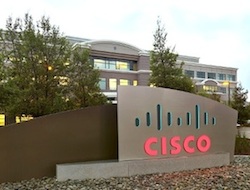Networking leader Cisco has thrown down the gauntlet to rivals Alcatel-Lucent and Ericsson with the introduction of a new range of mobile solutions designed to aid service providers in monetising “data in motion”- real-time and near real-time data generated by mobile and fixed connections between people, things and processes.
Uniting a whole host of products and services that Cisco has amassed from recent acquisitions, Cisco Quantum consists of four solution suites.
The Quantum Network Abstraction suite provides a real-time network abstraction layer for network data collection and augmentation, while the Quantum Policy Suite, enables operators to scale, monetise and personalise any service on any network that supports application-centric policy capabilities.
The Quantum Analytics Suite offers data visualisation dashboards and the Quantum WAN Orchestration Suite provides network management tools to simply capacity and traffic management.
“Our goal in Quantum is to cover various elements of logic, in terms of bringing quality analytics at every point in the network,” Satish Iyer, Cisco’s Service Provider Mobility Marketing Lead told Mobile Europe.
“This is meant to be an end-to-end solution created from modular solutions from our acquisitions. While customers can purchase these suites separately, we believe that they should be used together.
“You can start by optimising the WAN in a high-density area of users, such as in a stadium, and then, with the right policies, you can pitch to the subscribers and provide them with the best quality all the way up to layers 2 and 3.
Having an integrated solution where you derive intelligence from every point of the network means that we have the power to control and transfer intelligence from one layer to another, such as from the radio to the application layer.”
According to Chris Nicoll, Principal Analyst, Wireless Networks at Analysys Mason, more monetisation opportunities are open to operators with Cisco’s new suite of technology.
“We are getting much closer to making location-based services a viable financial benefit to the operators (and retailers),” he said.
“Cisco has brought in key talent from the traditional telco players, including Alcatel Lucent, and is benefiting from that experience and leadership. Helping operators to gain more insight into how users utilise the network opens up monetisation and differentiation opportunities on a finer scale than is possible with the macro cellular network. “
Dana Cooperson, VP and Practice Leader for Network Infrastructure at Ovum feels that Cisco’s new solution could change how operators run their networks.
“Communications service providers (CSPs) are under assault from over the top providers and revenues that are not keeping pace with traffic growth,” she told Mobile Europe.
“CSPs need to run their networks differently and better in order to better capture mobile broadband opportunities, and increased and integrated network intelligence and analytics are essential to their ability to do this.
“Storage and compute resources have become less expensive, and data analytics techniques from IT are making their way into telecom, offering a new way to think about and operate networks.
“But perhaps more importantly than Quantum is Cisco’s clear signal to the industry – and specifically to customers – that it’s a very serious contender in the mobile infrastructure space. It’s a clear challenge to telecom infrastructure-focused competitors like Alcatel-Lucent and Ericsson, but also IT-focused players including Oracle.”



